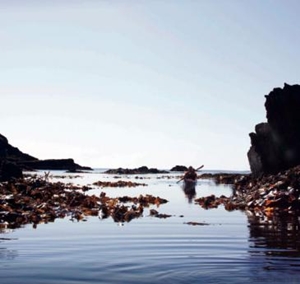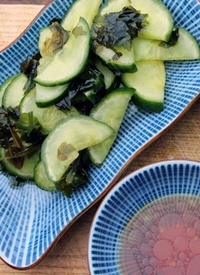
Kayaking is an ideal way to find seaweed
Maddy meets Irish champions of local, artisanal food, John and Sally McKenna, and discovers why seaweed is a free superfood that can transform our health.
Last month I was invited to speak at the Grow It Yourself Gathering in Ireland (a wonderful Irish veggie fest) where I met John and Sally McKenna. These two foodies are legends in Ireland. In 1991 they gave up their jobs and their flat in Dublin, bought a broken-down Renault 4 and set off around Ireland. In those days most people thought Irish food equated to stew and boiled to buggery greens but John and Sally had other ideas. They discovered an exciting local, artisanal food culture and from this adventure arose their highly sucessful guides about all the best places to eat, buy artisanal food and stay in Ireland.
At the Gathering they spoke about seaweed for the table and as a fertiliser. I have been reading and pondering about the de-mineralisation of our soil and what to do about it on my own no-dig patch so I was pretty agog about what they were saying. I’ll start with seaweed nutrition.
Did you know that all seaweeds are edible. Obviously some are more tasty than others and you have to be sensible about where you collect them from like all seafood but yes, we have an incredibly abundant resource under our nose. But Sally told me even more staggering facts about this noble weed:
- Seaweed has twice as much vitamin C as oranges
- It’s Ten times the calcium of cow’s milk
- And FIFTY times the iron content of spinach
- Seaweed gets rid of toxins from the body
- Kelp can help protect us from high blood pressure
- Seaweed re-mineralises the body and contains all the minerals and trace elements necessary for human health
- It also contains all the major fatty acids
- Seaweed blocks fat absorption and reduces cravings
- AND it’s rich in vitamin B12
- Seaweed makes your hair shine, is good for the skin and soothes the digestive system
- It also boosts our immune system.

The McKennas are also very enchanted by the concept of Edges, something that has preoccupied me as a permaculture designer for years. They say, “It is at the edge of nature where we find the greatest biodiversity. The edge: where two habitats combine… Where land and sea meet is the home to algae, or seaweed, possibly the oldest form of life on our planet and arguably the most bounteous.”
Sally has written a book about seaweed called Extreme Greens. It tells us how to identify the stuff, how to understand tides, the art of drying and storing, and of course how to cook it in a huge variety of ways. Seaweed can be bought from a wholefood shop (I used to sell Nori way back in the 1980s in Portsmouth in my shop!). You can also add it to food in powder form if your kids don’t like the taste. You can even make cosmetics from it and Sally tells you how.
So seaweed is a free superfood packed with goodness and for those of us lucky enough to live near a shoreline, it’s a great excuse to go foraging and beach combing, especially after a storm.
Sally McKenna writes a blog called Kitchen Life Skills: Things it helps to know.
John and Sally also have The Irish Food Channel where they make movies about Ireland’s food and Ireland’s food people.
Source: Permaculture – 11 Reasons to Eat Seaweed: The Forager’s Superfood





